
Robert Lea
Robert Lea is a science journalist in the U.K. who specializes in science, space, physics, astronomy, astrophysics, cosmology, quantum mechanics and technology. Rob's articles have been published in Physics World, New Scientist, Astronomy Magazine, All About Space and ZME Science. He also writes about science communication for Elsevier and the European Journal of Physics. Rob holds a bachelor of science degree in physics and astronomy from the U.K.’s Open University
Latest articles by Robert Lea
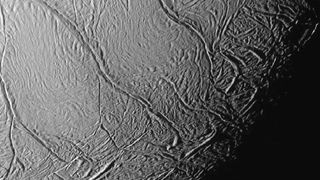
Enormous 'San Andreas fault' on Saturn's moon could help reveal signs of alien life
By Robert Lea published
Huge "tiger stripe" fault lines seen on Saturn's moon Enceladus raise hopes that a "long-lived" ocean containing potential alien life may lurk beneath the moon's icy shell.
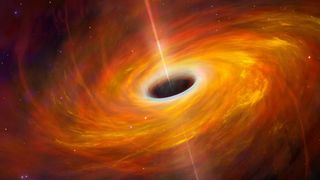
Black hole 'traffic jams' are forcing cosmic monsters to collide, new study finds
By Robert Lea published
Supermassive black holes may create conditions akin to "cosmic intersections with failed traffic lights" that make collisions between smaller stellar-mass black holes inevitable.
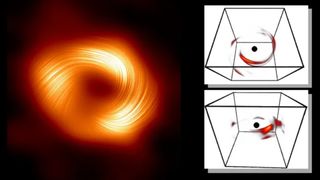
Explosive black hole flare from the center of our galaxy reconstructed from 'a single flickering pixel' using AI and Einstein's equations
By Robert Lea published
An explosive flare from the Milky Way's central black hole has been translated from 'a single flickering pixel' into a detailed 3D model using AI and Einstein's general relativity equations.
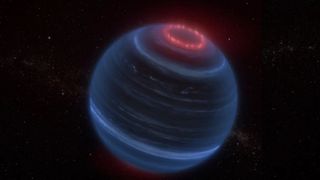
James Webb telescope's 'shocking' discovery may hint at hidden exomoon around 'failed star'
By Robert Lea published
JWST's surprise discovery of methane emissions and likely aurorae over a distant brown dwarf could indicate this "failed star" is orbited by an active moon.
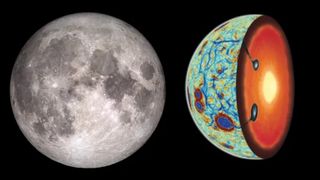
What happened when the moon 'turned itself inside out' billions of years ago?
By Robert Lea published
"For the first time, we have physical evidence showing us what was happening in the moon's interior during this critical stage of its evolution, and that's really exciting."
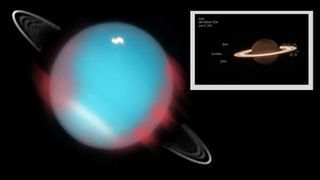
James Webb telescope to zoom in on Uranus and Saturn in study of mysterious auroras
By Robert Lea published
Two projects using the James Webb Space Telescope will look at the auroras of Uranus and Saturn to discover what processes make them tick.
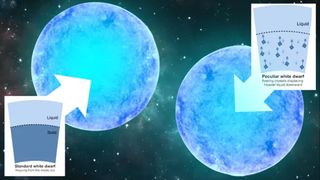
Newly discovered 'fountain of youth' phenomenon may help stars delay death by billions of years
By Robert Lea published
Recent observations show that some white dwarf stars suddenly stop cooling. Now, scientists propose a 'fountain of youth' mechanism that may explain how these stellar husks avoid death for billions of years.
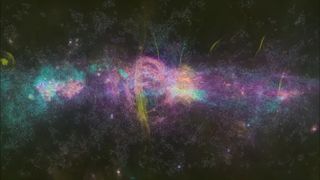
'This is a journey, not a destination': Stunning map of the Milky Way's center exposes new mysteries about our galaxy
By Robert Lea published
A stunning new map of the magnetic fields at the Milky Way's center charts never-before-seen features, and raises new questions about how our galaxy's central engine works.
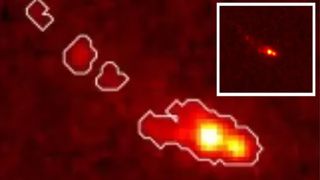
Speck of light spotted by Hubble is one of the most enormous galaxies in the early universe, James Webb telescope reveals
By Robert Lea published
The ancient obect Gz9p3, which appeared as a single point of light through the Hubble Space Telescope, is actually one of the most enormous galaxies in the early universe, James Webb Space Telescope observations reveal.
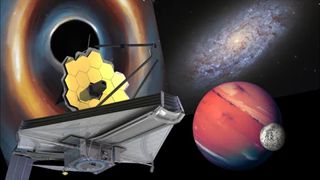
James Webb telescope reveals targets for the next year, including monster black holes, exomoons, dark energy — and more
By Robert Lea published
The beloved James Webb Space Telescope will soon begin working on a fascinating to-do list for 2024 and 2025, including research into black holes, alien moons, dark energy and more.
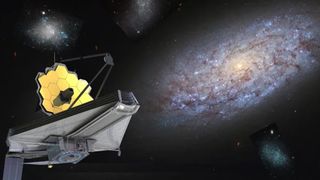
James Webb telescope reveals collection of ancient galaxies that 'transformed the entire universe'
By Robert Lea published
New observations with the James Webb Space Telescope reveal that dwarf galaxies in the early universe released enough collective radiation to change the cosmos forever.
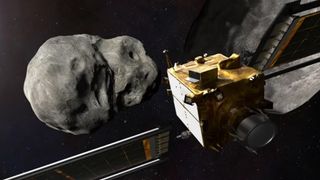
NASA's asteroid-slamming DART mission completely changed the shape of its target
By Robert Lea published
NASA's DART spacecraft seems to have completely reshaped asteroid Dimorphos after violently crashing into it in Sept. 2022
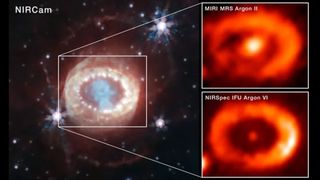
'Finally, we have the evidence': James Webb telescope spots neutron star hiding in wreckage of famous 1987 supernova
By Robert Lea published
A neutron star spotted by the James Webb Space Telescope stayed hidden for 37 years while lurking in the wreckage of a stellar explosion, Supernova 1987A.
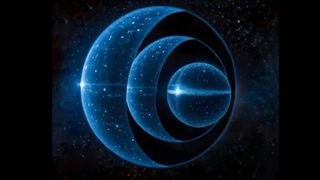
Bizarre 'Russian doll stars' predicted with Einstein's general relativity equations
By Robert Lea published
A new solution to Albert Einstein's theory of general relativity suggests hypothetical gravitational stars that look like black holes could be nested within one another.
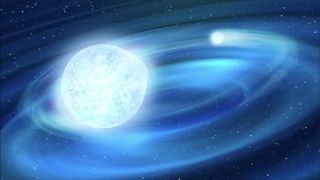
Dead star smaller than Jupiter is one of the tiniest in the known universe
By Robert Lea published
The discovery or an ultra-tiny white dwarf could reveal how stars smaller than Jupiter are born.
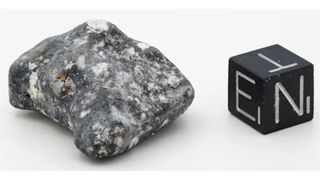
Meteor that exploded over Germany confirmed to be rare 'aubrite' as old as the solar system itself
By Robert Lea published
A meteor that exploded over Germany on Jan. 21 was confirmed to be a rare aubrite, a type of asteroid as old as the solar system.
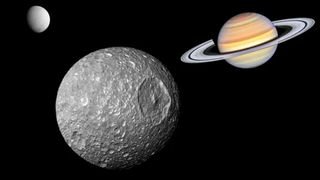
Saturn's 'Death Star' moon Mimas may have an underground ocean scientists never believed could exist
By Robert Lea published
A new study of Saturn's 'Death Star' moon Mimas finds evidence of a young, underground ocean that may be hospitable to early forms of life.
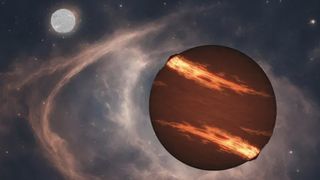
James Webb telescope makes ultra-rare detection of 2 planets orbiting dead stars
By Robert Lea published
The James Webb Space Telescope has detected two alien planets orbiting white dwarfs, the collapsed husks of once-mighty stars. The discovery offers a hint of what our solar system will look like after the sun's eventual demise.
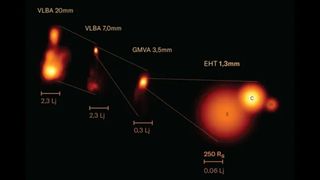
Event Horizon Telescope spies gargantuan energy jets erupting from nearby supermassive black hole
By Robert Lea published
Astronomers investigated an active supermassive black hole at the heart of Perseus A using the Event Horizon Telescope, spotting an epic battle between gravity and magnetism.
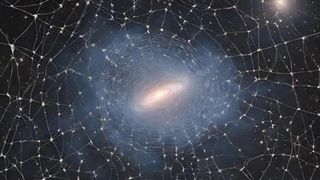
How do galaxies grow while ensnared in the universe's cosmic web?
By Robert Lea published
New simulations show how thousands of galaxies evolve by traveling through the strands of gas, dust and stars that make up the universe's "cosmic web."
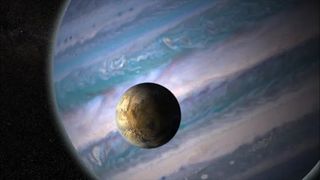
Are they exomoons or not? Scientists debate existence of 1st moons seen beyond our solar system
By Robert Lea published
Team "pro-exomoon" is back to defend the discovery of the first and only exomoons potentially seen by humanity.

'This might be the seeds of life': Organic matter found on asteroid Ryugu could explain where life on Earth came from
By Robert Lea published
Organic matter found in samples of asteroid Ryugu suggests that ancient comets may be responsible for bringing the 'seeds of life' to Earth.
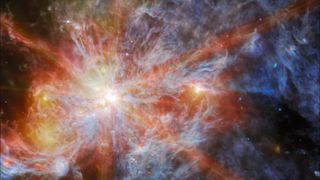
James Webb telescope reveals stunning 'star factory' in glorious new image
By Robert Lea published
The powerful James Webb Space Telescope captured a starburst complex in the Large Magellanic Cloud, with stunning results.
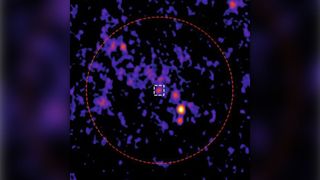
Faint radio signal from ancient star cluster could be rare 'missing link' black hole, astronomers report
By Robert Lea published
The most sensitive image of a globular cluster, a tightly packed ball of ancient stars, has revealed a strange radio signal that could be a black hole.
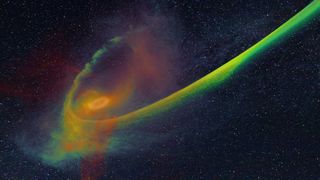
Gory simulation reconstructs the violent clash between a monster black hole and a doomed star
By Robert Lea published
A new cosmic crime scene reconstruction tells the full story of a star ripped apart by a ravenous black hole, revealing a previously unknown aspect of these tidal disruption events.
Get the world’s most fascinating discoveries delivered straight to your inbox.
